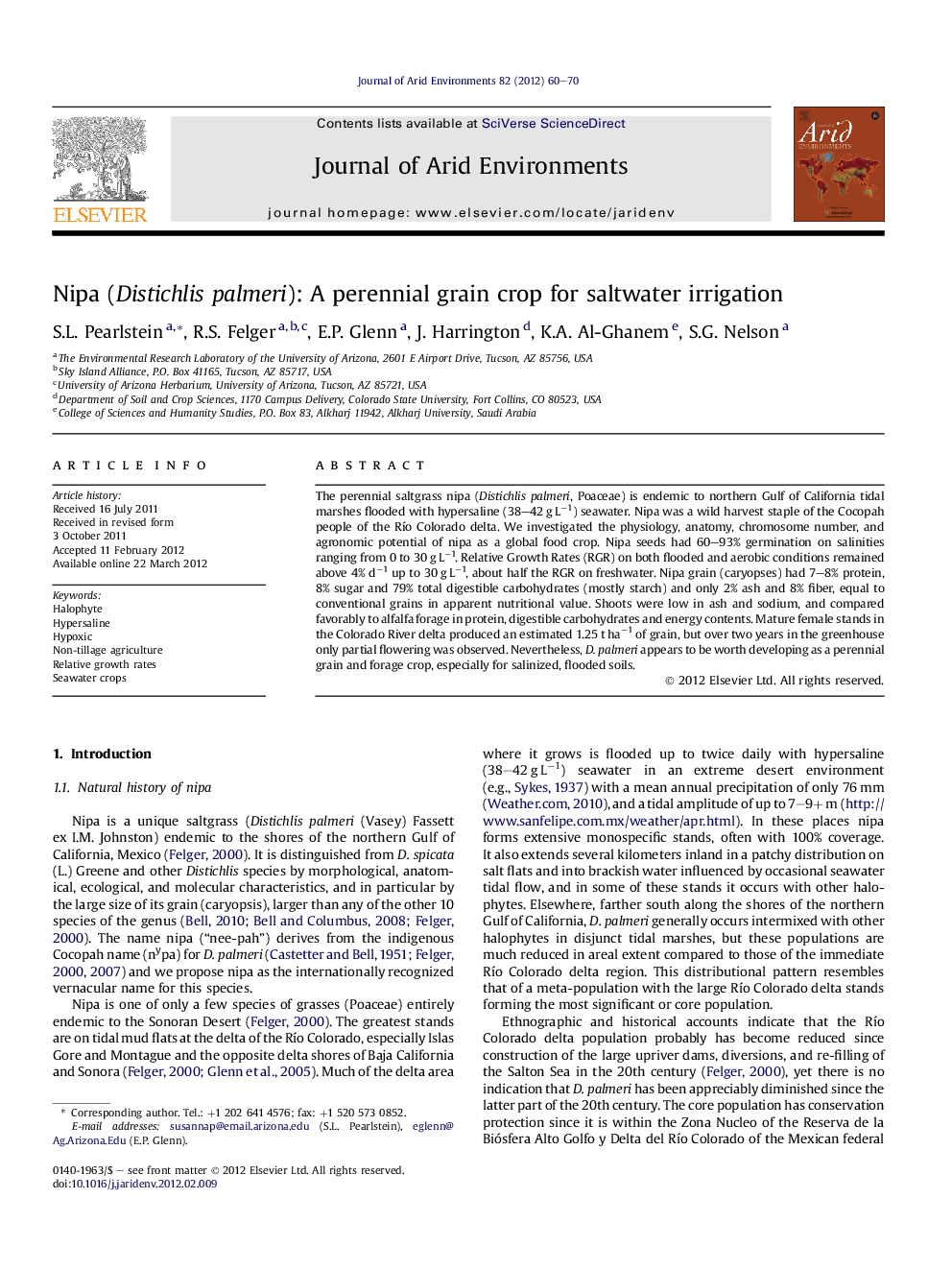| Article ID | Journal | Published Year | Pages | File Type |
|---|---|---|---|---|
| 4393373 | Journal of Arid Environments | 2012 | 11 Pages |
The perennial saltgrass nipa (Distichlis palmeri, Poaceae) is endemic to northern Gulf of California tidal marshes flooded with hypersaline (38–42 g L−1) seawater. Nipa was a wild harvest staple of the Cocopah people of the Río Colorado delta. We investigated the physiology, anatomy, chromosome number, and agronomic potential of nipa as a global food crop. Nipa seeds had 60–93% germination on salinities ranging from 0 to 30 g L−1. Relative Growth Rates (RGR) on both flooded and aerobic conditions remained above 4% d−1 up to 30 g L−1, about half the RGR on freshwater. Nipa grain (caryopses) had 7–8% protein, 8% sugar and 79% total digestible carbohydrates (mostly starch) and only 2% ash and 8% fiber, equal to conventional grains in apparent nutritional value. Shoots were low in ash and sodium, and compared favorably to alfalfa forage in protein, digestible carbohydrates and energy contents. Mature female stands in the Colorado River delta produced an estimated 1.25 t ha−1 of grain, but over two years in the greenhouse only partial flowering was observed. Nevertheless, D. palmeri appears to be worth developing as a perennial grain and forage crop, especially for salinized, flooded soils.
► D. palmeri is a unique endemic grass from the Colorado River delta. ► It produces a grain similar in size and composition to rice. ► It grows under saline and hypoxic conditions. ► Forage value is equal to alfalfa. ► It is a potential new crop for saline agriculture.
